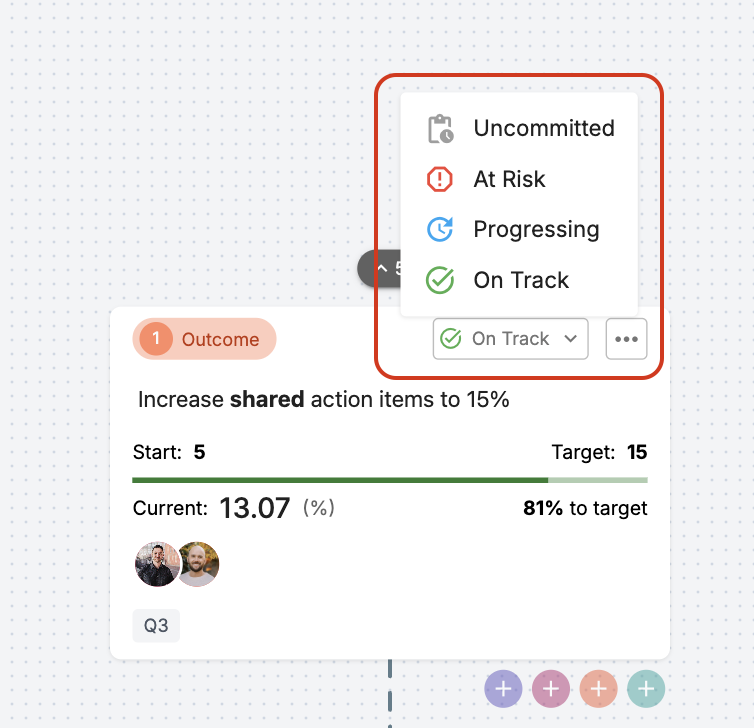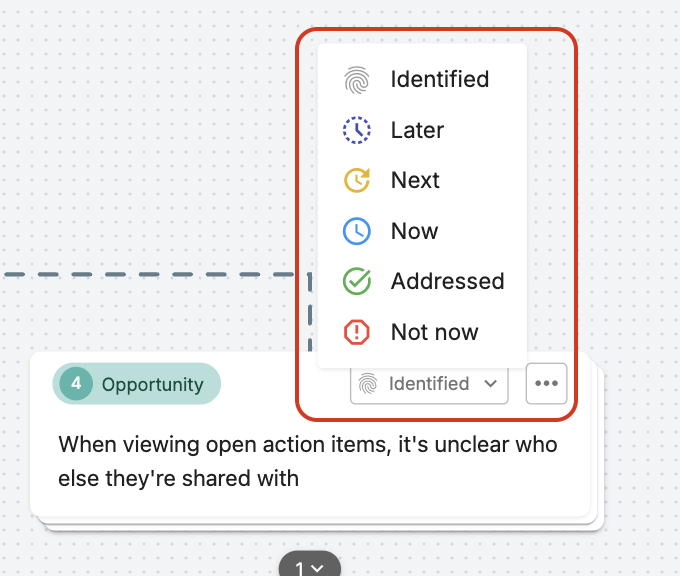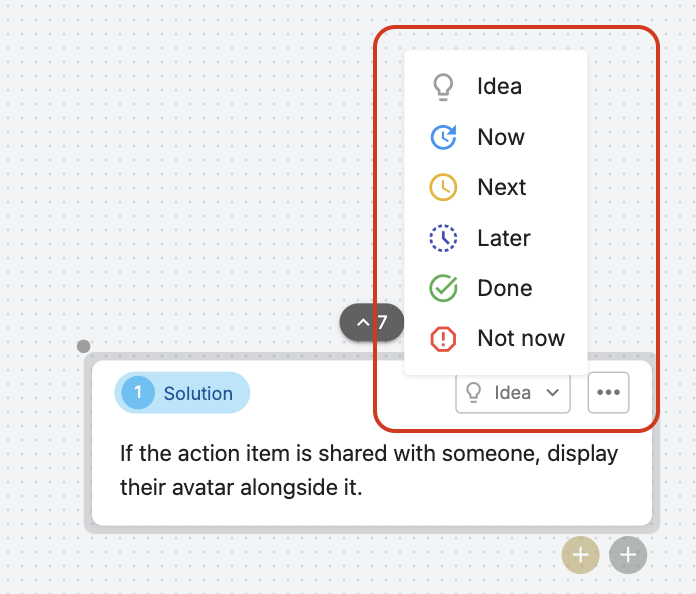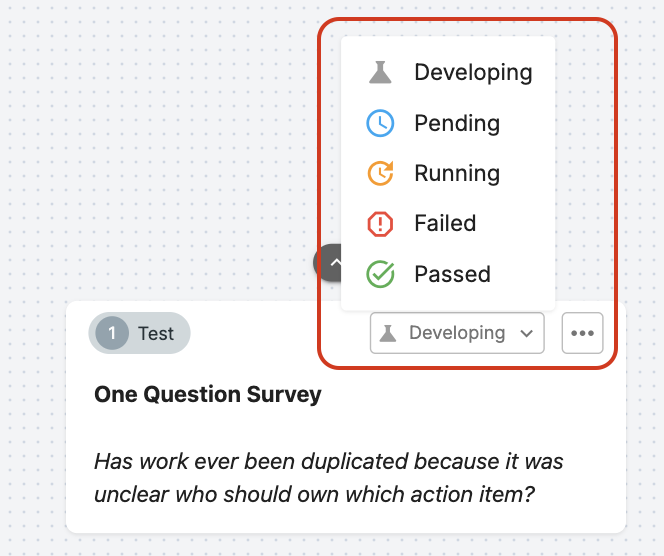Status Framework by Card Type
Each card type in the system uses a specific set of statuses to indicate its current state in the workflow. These built-in statuses provide enhanced functionality and visual cues that improve team collaboration and communication efficiency.KPI Statuses
You can set upper and lower thresholds for your KPIs to define acceptable performance ranges. This helps in identifying when a KPI is performing well or when it requires attention. For example, if you wanted to be alerted when something like “conversion rate” dips below a given percentage, you could set a lower threshold for that KPI.| Stage | Commitment | Description |
|---|---|---|
| In Bounds | Within acceptable parameters | The KPI measurement is currently within the defined threshold range, indicating healthy performance. |
| Out of Bounds | Outside acceptable parameters | The KPI measurement has crossed a defined threshold boundary, requiring attention and potential intervention. |
Outcome Statuses

| Stage | Commitment | Description |
|---|---|---|
| Uncommitted | No official commitment | The outcome has been identified but not yet formally committed to by the team or organization. |
| At Risk | Committed but endangered | Progress toward the outcome is threatened by obstacles, delays, or resource constraints. |
| Progressing | Committed with active work | Work toward achieving the outcome is underway with noticeable progress, but not yet complete. |
| On Track | Committed and proceeding well | The outcome is being pursued according to plan, with expected progress and no significant obstacles. |
Opportunity Statuses

| Stage | Commitment | Description |
|---|---|---|
| Identified | No/Unknown commitment | Aware that the Opportunity exists but have made no commitment to solving it. This is how all Opportunities start. |
| Not now | No commitment | Recognized as an opportunity but deliberately chosen not to address it at this time, possibly due to resource constraints or competing priorities. |
| Later | Committed (Moderate Confidence) | Committed (for now) to solving the Opportunity. Confidence is relatively high that it’s an opportunity worth addressing, but this is subject to change. |
| Next | Committed | Committed and will begin work soon to start addressing the opportunity. It may be the case that the opportunity is currently being researched or solutions being identified. |
| Now | Committed | Committed and work is actively underway to address it. It’s best if there is an identified solution associated with an opportunity in Now - if not, solutioning should be underway. |
Solution Statuses

| Stage | Commitment | Description |
|---|---|---|
| Idea | No/Unknown commitment | Initial concept for addressing an Opportunity. No commitment to implementation has been made. |
| Not now | No commitment | Solution evaluated but intentionally deprioritized due to resource constraints, technical limitations, or strategic considerations. |
| Later | Committed (Moderate Confidence) | Planned for a future timeframe beyond the current planning horizon. Recognized as valuable but with lower immediate priority than Now/Next items. |
| Next | Committed | Solution approved with implementation details being finalized. Awaiting resource allocation or developer availability. |
| Now | Committed | Solution actively under development. Implementation work is in progress. |
Experiment Statuses

| Stage | Commitment | Description |
|---|---|---|
| Developing | In preparation | Experiment design is being created or refined before execution. Methods and metrics are being established. |
| Pending | Ready for execution | Experiment is fully designed and waiting to be run. All prerequisites are in place. |
| Running | In progress | Experiment is currently active and collecting data. Results are not yet available. |
| Failed | Completed (invalidated) | Experiment has concluded and results indicate the assumption was incorrect or not supported by evidence. |
| Passed | Completed (validated) | Experiment has concluded and results support the original assumption, providing validation. |

